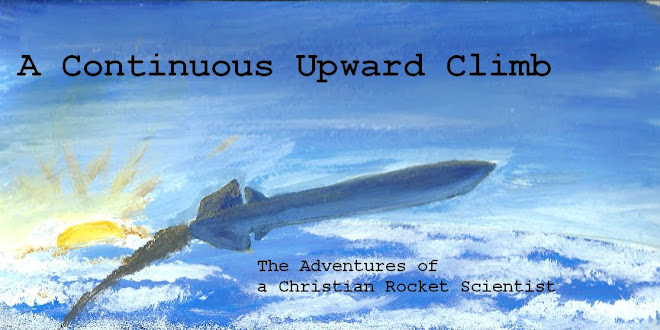Our proposal was accepted, so Iowa State is now one of 42 universities competing in USLI.
The University Student Launch Initiative (USLI) is a NASA competition for universities across the country to design, build and launch a high-power rocket to an altitude of 5280 feet (1 mile). The rocket is designed to carry a scientific or engineering payload of the team's own creation. The launch is down in Huntsville Alabama near the Marshall Space Flight Center every April. Throughout the school year each team must submit four reports; the initial proposal, the preliminary design review (PDR), the critical design review (CDR), the flight readiness review (FRR) and finally the post-launch assessment review (PLAR). Other requirements are to create and up-keep a team website, and to conduct educational outreach activities on space and rocketry, or other scientific or engineering related disciplines.
Last year I signed on to the project as an exciting activity for my freshman year at Iowa State. It was such a good experience that this year I am co-leading the project.
We began meeting in early September to discuss what the project was going to be about this year. The payload concept had to be decided first, because it would dictate what sort of launch vehicle would be able to take it to a mile. There were many concepts proposed, including the following:
- Self-retrieving rocket (almost a joke, really)
- Load cells on fins/other protrusions to measure drag
- Deploy a rover on landing (similar to Arizona last year)
- Reconnaissance controlled descent vehicle
Somewhere along the line, somebody suggested powering the helicopter and going for a full-fledged UAV. This suggestion was initially met with some skepticism, since it would greatly magnify the complexity of the system.
Our current plan is to go for a quadcopter system, with hinges on the four deployment arms so that the payload can fit snugly into the rocket body. The nose cone will be part of the payload; a clear plastic hemispherical dome. The camera will be on a pan and tilt system using a motor and servo, and will transmit live HD video to a ground tracking station.
One of the benefits of this option is that the user can keep an eye in the sky for as long as the battery will last, which would be much longer than the time it would take for the payload to fall, retarded only by the free-spinning helicopter blades. This extra time-aloft increases the return on the significant cost of rocket-assisted deployment.
The launch vehicle concept is currently to construct it from fiberglass with a 7.7 inch outer diameter. The motor we currently plan to use is a Cesaroni L1115, which would take a 10-lb payload approximately 5500 feet. It's always good to design the rocket to fly higher than it's supposed to, because the rocket tends to be heavier than RockSim predicts and have a higher drag coefficient than RockSim predicts. Also, after the test launch in mid-February, if it is determined that the rocket will fly too high, additional mass can be added to bring the altitude down to the desired level.
One concept for the launch vehicle is to use air-brakes to keep the rocket from going over a mile. Judging from success rates of attempts in the past, this would be a very challenging design feature to implement. We're currently exploring the feasibility of this option.
We are all very excited about this project. I think we have a good plan, and a lot of good, fresh ideas. The team of roughly 12-15 students has a nice variety of skills, majors, experience, etc.
More updates will follow regularly. When the team website is up and running I will post a link. When we begin work on the project I will also post YouTube videos.


No comments:
Post a Comment